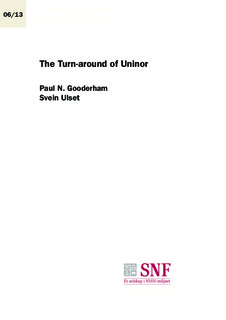| dc.description.abstract | On October 29, 2008, Telenor of Norway announced its plans to enter the Indian mobile telecom market. Despite a strong start, revenue did not grow in line with business projections. In a highly congested market, price war caused rapidly shrinking margins. Something radical had to be done and quickly. A new cost-focused management team, headed by Telenor’s Asia chief Sigve Brekke, was appointed. In record time, they managed to turn Uninor into a dedicated ultra-low-cost basic services provider for the mass market, based on optimized network capacity in 13 of India’s 22 telecom circles. This was made possible by the utilization of an innovative “Transformational Partnership” model that combines radical outsourcing of information technology (IT) services with deeply integrated relational contracting for such services. As such Uninor’s new operating model for the Indian market represented a radical break not only with standard Telenor practice, but also with telecom conventions more generally. Gradually, Uninor's results started to improve, with a prospect of turning EBITDA positive by end of 2013 with an expected traffic volume equal to one third of the current break-even volume of the leading incumbent | no_NO |
